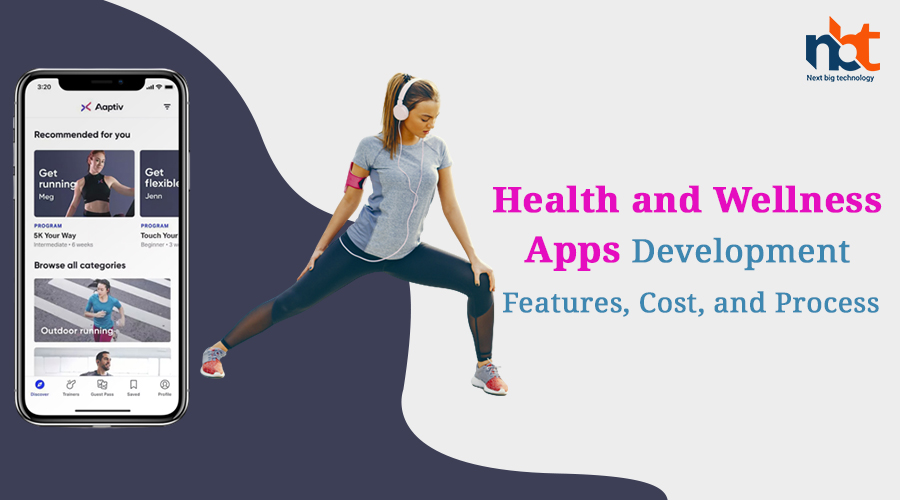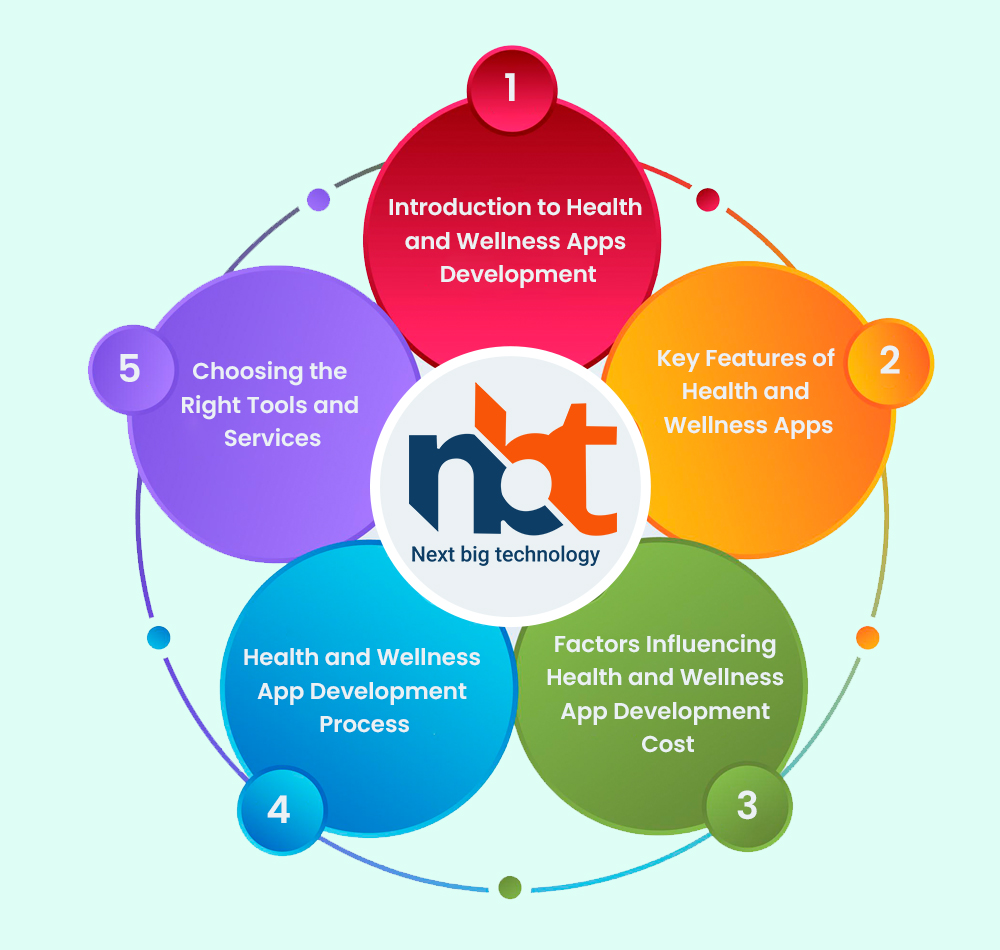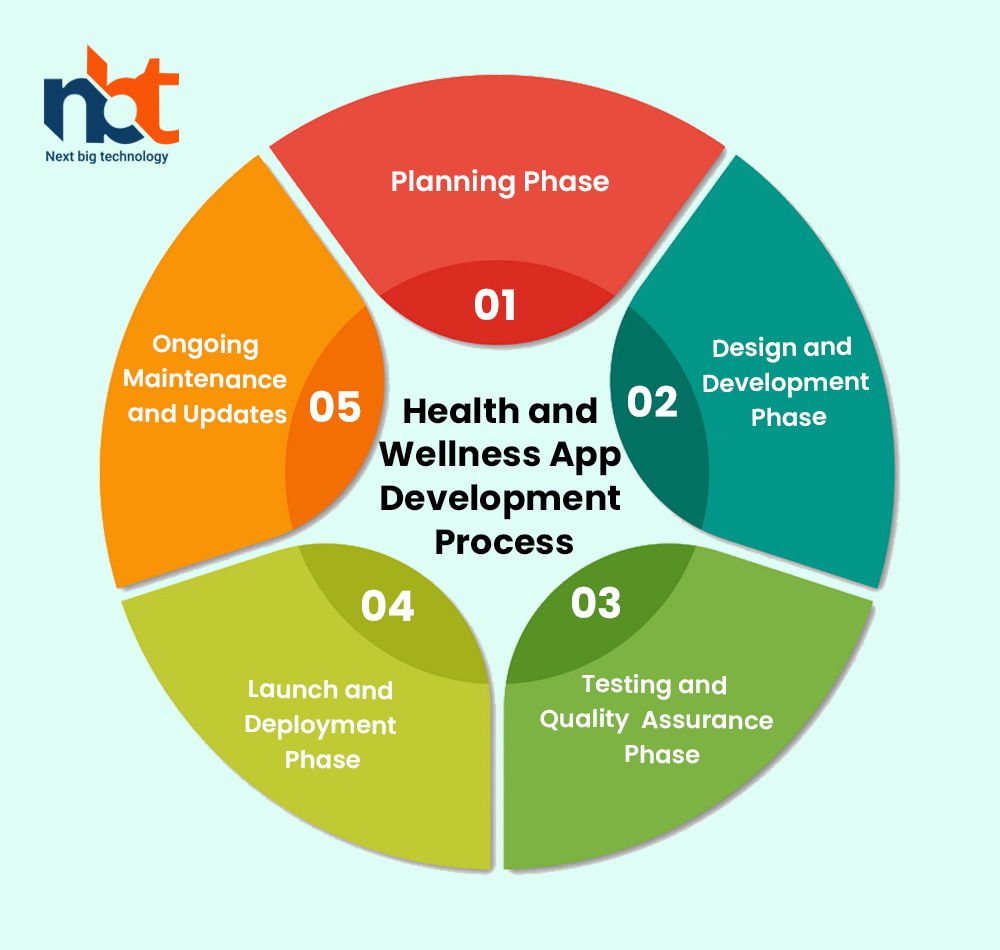In the digital age, health and wellness apps have emerged as essential tools for individuals seeking to improve their physical and mental well-being. These apps offer a wide range of functionalities, from tracking fitness goals to providing meditation guidance, helping users adopt healthier lifestyles. This comprehensive guide delves into the key features, cost considerations, and step-by-step process involved in developing impactful health and wellness apps that empower users on their journey to better health.
Table of Contents
Introduction to Health and Wellness Apps Development
- Understanding Health and Wellness Apps: Defining the role of mobile applications in promoting health and holistic well-being.
- Importance of Digital Wellness: Highlighting the benefits of using apps to monitor and enhance physical and mental health.
Key Features of Health and Wellness Apps
Fitness Tracking and Goal Setting:
- Activity Tracking: Monitoring steps, distance, calories burned, and active minutes.
- Personalized Goals: Allowing users to set fitness objectives and track progress.
Nutrition and Diet Management:
- Food Logging: Enabling users to record meals and track nutritional intake.
- Calorie Counting: Providing a database of foods and their calorie content.
Mindfulness and Mental Well-being:
- Guided Meditation: Offering meditation sessions for stress reduction and relaxation.
- Breathing Exercises: Providing breathing techniques to manage anxiety.
Sleep Monitoring and Improvement:
- Sleep Tracking: Analyzing sleep patterns and duration.
- Sleep Tips: Offering recommendations for improving sleep quality.
Personalized Content and Insights:
- Health Insights: Presenting personalized health summaries and recommendations.
- Content Libraries: Providing articles, videos, and resources related to wellness topics.
Social Engagement:
- Community Forums: Offering platforms for users to connect, share experiences, and seek advice.
- Challenges and Competitions: Organizing fitness challenges to encourage engagement.
User Profiles and Privacy:
- User Registration: Allowing users to create profiles to access personalized features.
- Data Privacy: Implementing security measures to protect user health data.
Factors Influencing Health and Wellness App Development Cost
- Features and Complexity: The number and complexity of features integrated into the app.
- Design and User Experience: Creating an intuitive and visually appealing user interface.
- Integration with Wearable Devices: Developing compatibility with fitness trackers and smartwatches.
- Content Creation and Personalization: Generating engaging articles, videos, and insights.
- Social Engagement Features: Incorporating community forums and challenges.
- Data Security and Privacy: Ensuring compliance with data protection regulations.
- Ongoing Maintenance: Regular updates, security checks, and customer support.
Health and Wellness App Development Process
1. Planning Phase
- Identify App Objectives: Define the primary purpose of the app (fitness tracking, meditation, nutrition).
- Feature List: Compile a comprehensive list of features necessary for the app.
- User Experience (UX) Design: Sketch the app’s user flow and initial design concept.
- Platform Selection: Decide on the target platforms (iOS, Android, or both).
2. Design and Development Phase
- Wireframing and Prototyping: Create wireframes to visualize the app’s layout and navigation.
- User Interface (UI) Design: Craft visually appealing screens aligned with the app’s purpose.
- Backend Development: Build the backend infrastructure to handle user data and app functionality.
- Wearable Device Integration: Develop compatibility with wearable health devices.
3. Testing and Quality Assurance Phase
- Functional Testing: Verify that all app features function as intended.
- Usability Testing: Involve users to test the app’s usability and provide feedback.
- Security Testing: Ensure data security and privacy safeguards are in place.
- Performance Testing: Test app responsiveness and loading times.
4. Launch and Deployment Phase
- App Store Submission: Prepare and submit the app to relevant app stores (Apple App Store, Google Play Store).
- Promotion and Marketing: Develop a strategy to promote the app and attract users.
- User Onboarding: Provide user guides or tutorials to help users navigate the app.
- Analytics Setup: Implement analytics tools to track user engagement, feature usage, and user behavior.
5. Ongoing Maintenance and Updates
- Regular Updates: Continuously enhance the app by adding new features and improvements.
- Bug Fixes: Address technical issues promptly to ensure smooth app functionality.
- Security Updates: Regularly update security measures to protect user health data.
- Customer Support: Provide assistance to users for inquiries and issues.
6. Choosing the Right Tools and Services
- App Development Platforms: Explore platforms like React Native, Flutter, or native app development.
- Wearable Device Compatibility: Utilize SDKs and APIs to connect with health monitoring devices.
- Analytics Tools: Implement tools like Google Analytics or Mixpanel for user behavior tracking.
- Content Creation Tools: Use graphic design software for creating visuals and multimedia content.
- Data Security: Ensure compliance with regulations like HIPAA for health data security.
Conclusion
Health and wellness apps have the potential to improve individuals’ well-being by offering tools for fitness, mindfulness, nutrition, and more. The features you incorporate, the design complexity, and the ongoing engagement efforts all contribute to the overall cost. By following a structured development process, leveraging appropriate tools, and prioritizing user experience, security, and compliance, you can create a health and wellness app that empowers users to make positive lifestyle changes, achieve their wellness goals, and lead healthier and more balanced lives.











